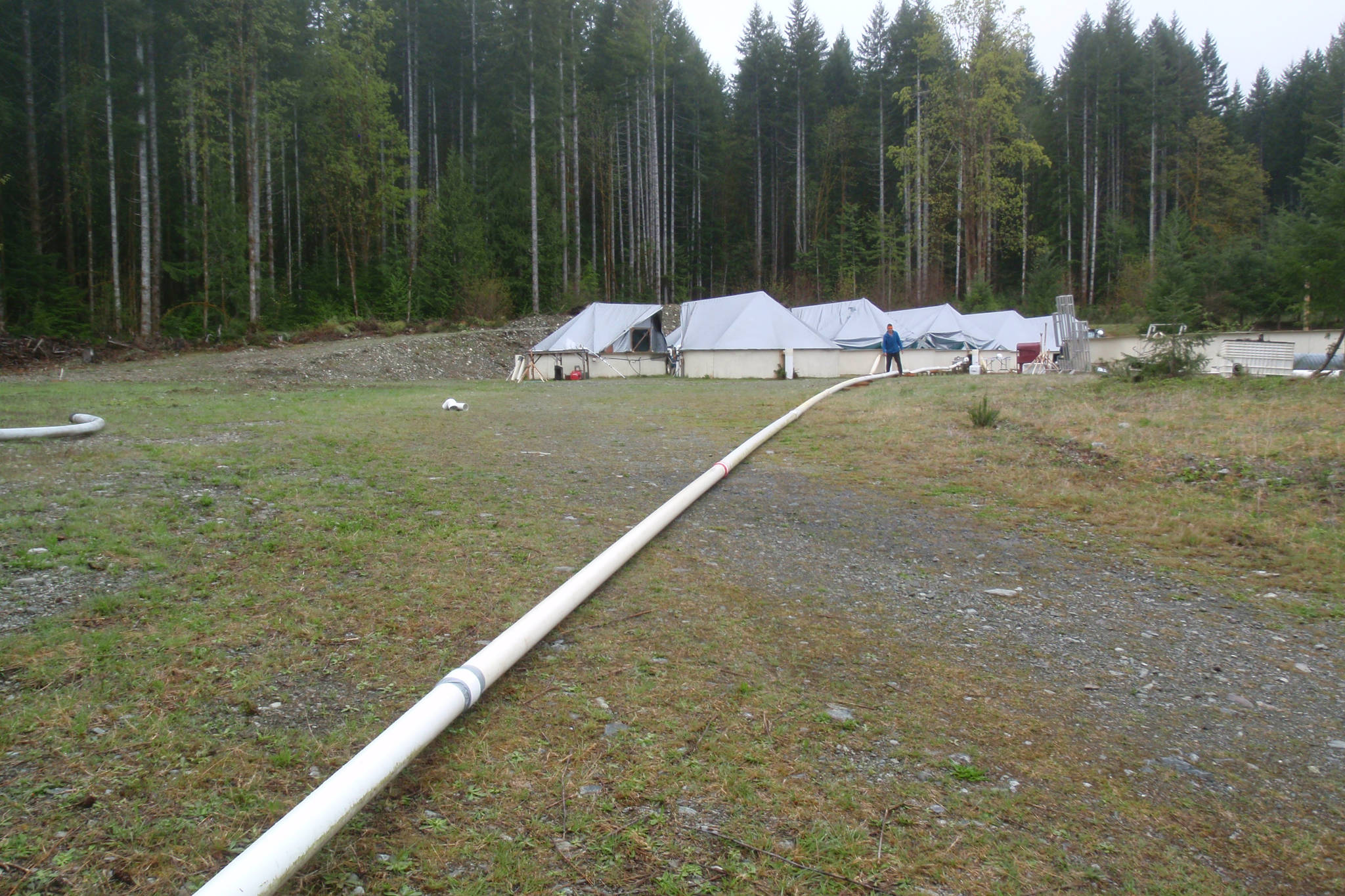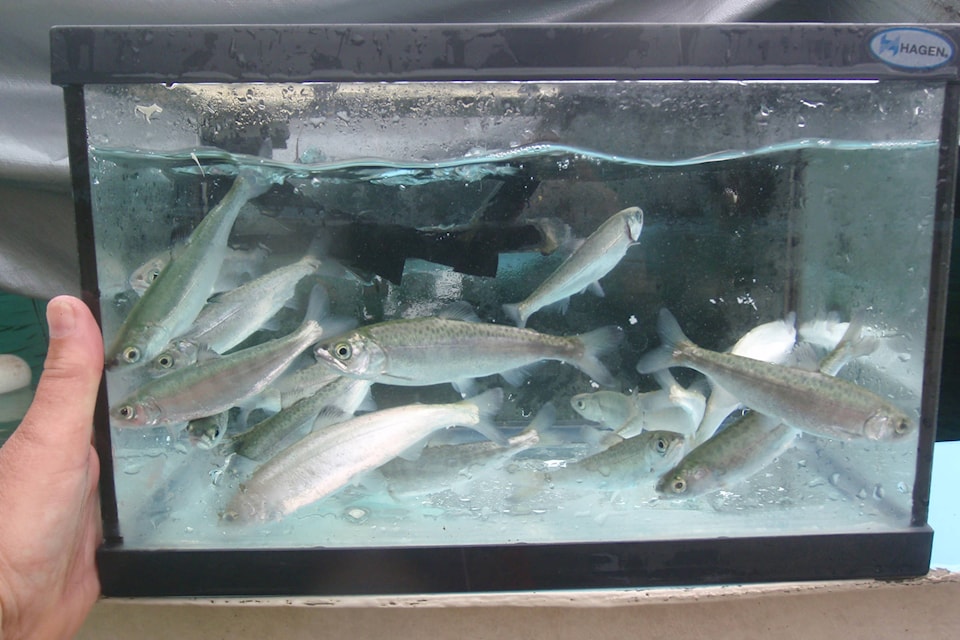Omega Pacific Hatchery has released its fourth and final batch of yearling chinook smolts as part of a four-year comparative trial.
Despite complications from the COVID-19 pandemic, 110,000 smolts (16 to 20 grams in size) were released into Great Central Lake at the end of April.
“We originally planned to release at Robertson Creek Hatchery,” explained Omega Pacific Hatchery owner and operator Carol Schmitt. “We would need a bunch of people to help load the fish, so we couldn’t maintain social distancing.”
Instead, Omega Pacific gained approval from the Department of Oceans and Fisheries (DFO) to release the smolts in front of the hatchery into Great Central Lake. Volunteers put together a 600-foot pipeline network with running water and dipped the fish into a hopper full of water, allowing them to travel from the land-based rearing pools to the lake.
“It was a very passive release,” said Schmitt. “The fish just plopped into the water. By the end of the day, we could see them schooling.”
Omega Pacific Hatchery uses an innovative method of releasing S1 chinook smolts, holding the fish for a year in cool freshwater so that their immune systems can develop. The standard S0 chinook is raised on warmer water for only three months before release. According to Schmitt, preliminary trials show 10 times greater survival rates on average for the S1 smolts.
During this four-year trial, Omega Pacific grew a comparative group of juveniles over four years to Robertson Creek Hatchery. The first group of smolts was released in 2017 and, according to Schmitt, some of these fish have already been captured as far away as the Alaska panhandle.
All fish are coded wire tagged and adipose clipped. When they are caught as adults, the tag number is entered into a data bank which records the date, location and fishery where they were caught.
“We’ll end up with fish up to 2025,” said Schmitt. “It’s a long haul.”
With the trial coming to an end, tentative plans are being finalized for a collaborative project to help rebuild the Henderson Lake chinook run, commencing this fall.
RELATED: Port Alberni Salmon Fest gives back with donation to hatchery
Schmitt is offering her thanks for all the organizations and individuals who have assisted in the labour and costs for raising the yearling chinooks throughout the four-year trial, including the Port Alberni Salmon Festival Society, Tseshaht and Hupacasath First Nations, the B.C. Wildlife Federation, Area 23 Harvest Committee, Parksville Qualicum Fish and Game, Chemainus Rod and Gun, Victoria Fish and Game Protective Association, Pacific Salmon Foundation, West Coast Aquatic, the DFO, Cermaq, Alberni Island Shuttle and the BC Salmon Farmers Association.
“We wouldn’t have been able to do the project without all the people stepping up and helping us out,” she said.
elena.rardon@albernivalleynews.com
Like us on Facebook and follow us on Twitter

